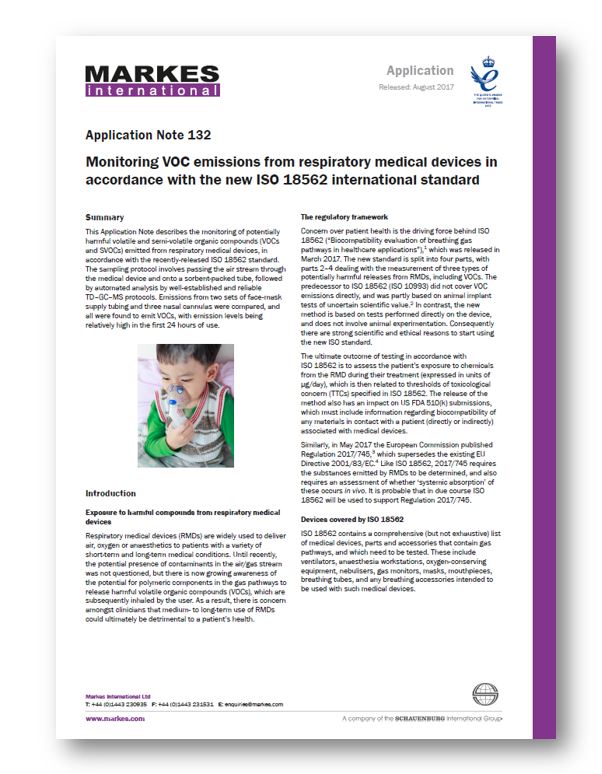ISO 18562: Monitoring emissions of VOCs from respiratory medical devices
 Exposure to harmful chemicals
Exposure to harmful chemicals
Respiratory medical devices are widely used in the field of medicine, but there is now growing awareness of the potential for polymeric components in the gas pathways to release harmful volatile organic compounds (VOCs).
These compounds are then subsequently inhaled by the patient, leading to concerns that long-term use of the devices could ultimately be detrimental to a patient’s health.
As a result of these concerns, a new standard (ISO 18562), was released in March 2017. This deals with the measurement of various emissions from respiratory medical devices, including VOCs, and is expected to be widely adopted.
New study into emissions from respiratory medical devices
Markes has now published a study that describes an ISO 18562-compliant analytical setup, using pumped sampling onto sorbent tubes, followed by analysis by thermal desorption–gas chromatography–mass spectrometry (TD–GC–MS).
Emissions from two sets of face-mask supply tubing and three nasal cannulas were compared, and it was found that they all emitted VOCs, with emission levels being relatively high in the first 24 hours of use. Over 100 compounds were identified across the five samples, as well as a substantial hydrocarbon/oil-like response.







